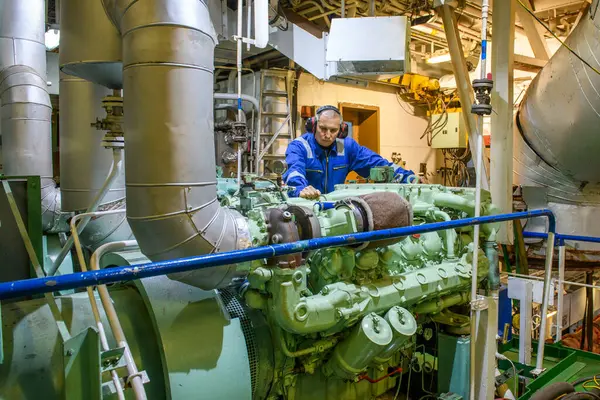
“It’s hard to ignore a number like $120,000. Yet Ford Motor Company has 5,000 open mechanic jobs paying that salary. The warning from CEO Jim Farley is blunt “We are in trouble in our country. We are not talking about this enough. His concern goes far beyond Ford’s shop floors to a snapshot of a national shortage in skilled trades threatening economic stability and the future of the American middle class.

1. A Shortage That Spans the Economy
The gap isn’t confined to automotive work. Farley cites more than a million openings in vital positions-emergency services, trucking, factory work, plumbing, electrical trades-where demand outstrips supply. The Bureau of Labor Statistics reported over 400,000 manufacturing jobs open in August-a month when unemployment reached relatively low levels. Surveys of the industry by the Manufacturing Institute and Deloitte have routinely reported that recruiting and retaining workers is the top challenge facing over half of the firms in the sector.

2. The Skills Pipeline Problem
Farley emphasizes the timeframe that advanced mechanic work requires. Pulling a diesel engine from a Ford Super Duty truck takes at least five years of training. “We do not have trade schools,” Farley laments, citing the loss of vocational education that built generational prosperity. Without that infrastructure, even high wages can’t fix the shortage without a predictable pipeline of trained workers.

3. Historical Roots of the Middle Class
Skilled trades once were the backbone of the American middle class. Farley’s own grandfather was employee number 389 at Ford and built a secure life through trade work on the Model T. But that legacy is now under strain, as decades of policy and cultural emphasis on four-year degrees have sidelined vocational paths. And when manufacturing left U.S. shores, many states began to “deemphasize skills and trade education at the high school level,” said Darrell Edwards of the University of Tennessee.

4. Gen Z’s Shift Toward Trades
There are signs of change, though. Generation Z is increasingly wary of the traditional college route, leery of crushing student debt and attracted to well-paying, hands-on careers. Enrollment in trade-focused programs was up 16% last year-the highest since 2018-while enrollment in four-year colleges waned. Sy Kirby and Diego Aguilar are young workers part of what some call the “toolbelt generation,” those who choose vocational training over classrooms and find financial freedom in skilled labor.

5. Vocational Investment Economic Impact
Investing in vocational education is more than a workforce fix-it’s an economic growth strategy. Training programs that incorporate advanced technologies, such as the one Kellanova has developed in concert with the Tennessee College of Applied Technology, graduate workers who can work safely and efficiently from day one. Examples of federal initiatives that fund apprenticeships and certifications include Manufacturing USA and the Workforce Innovation and Opportunity Act, but scaling these programs up remains a problem.

6. Technology and the Future of Trades
Manufacturing is being reimagined by automation and AI, but for many in the industry, the technology should augment rather than replace human know-how. “We’re using automation not to replace jobs, but to preserve that expertise,” says Laura Phillips of Pella Corp. That makes hard jobs easier and equips younger workers with what they need to upskill alongside machines, keeping trades relevant in a tech-based economy.

7. The Construction Parallel
Meanwhile, the construction industry will need 501,000 more workers above regular staffing in 2024 to meet demand brought on by things like the retirement of experienced workers and perceptions that discourage youth from pursuing trades. Associated Builders and Contractors advocates for an “all-of-the-above” approach to workforce development that includes more apprenticeships and immigration reforms that make it easier to fill high-demand jobs.

8. Changing Perceptions
For some, the stigma associated with “dirty jobs” still serves as a deterrent to the trades-which are often financially and personally rewarding. Outreach programs, plant tours, and mentorships help change that narrative, one that’s increasingly high-tech and impactful. As Phillips says, manufacturing is “a sector where you can make a real impact and build a fulfilling career.”

The stakes are clear without robust investment in training, outreach, and perception change, the skilled trades gap will get worse, slowing infrastructure projects, manufacturing growth, and the rebuilding of domestic supply chains. Farley’s alarm is not just about Ford-it’s a call to revalue the work that built the nation and make sure the next generation has the tools, skills, and opportunities to take it forward.


